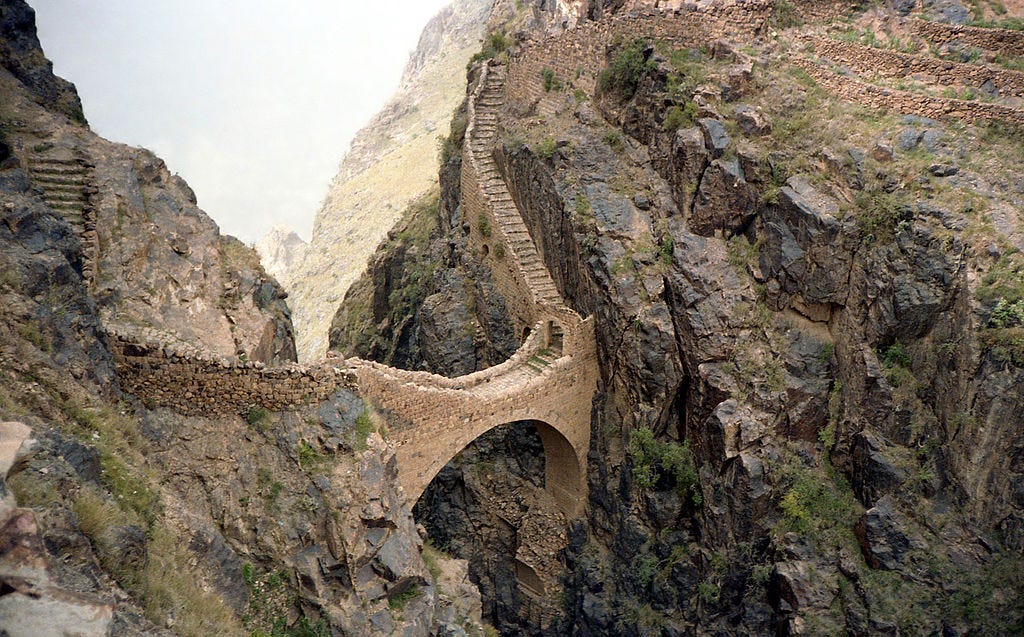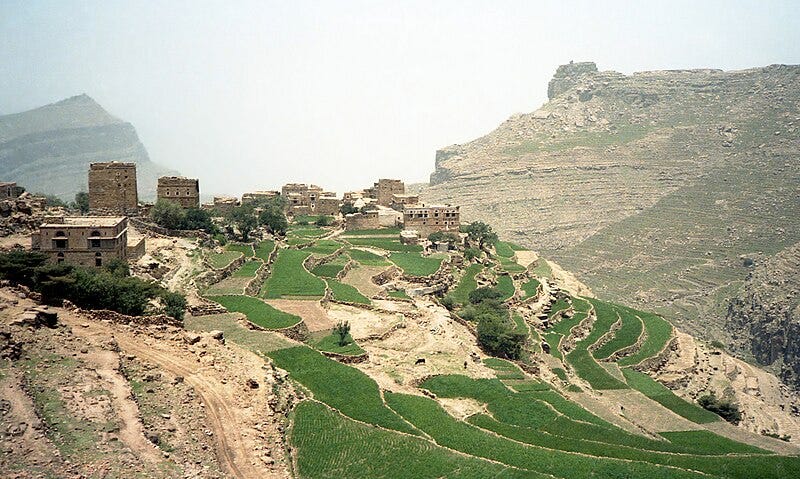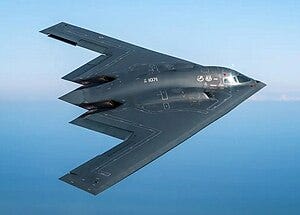The Houthis Invite the War to Yemen
Until recently, pretty much nobody was paying attention to these underdogs of Iran-backed militias, but as of March 2025, the US is bombing them.
This post first ran in October 2024, but with Trump ordering massive airstrikes on March 15, 2025 — and promising “HELL WILL RAIN DOWN UPON YOU LIKE NOTHING YOU HAVE EVER SEEN BEFORE,” I am updating this post.
This week I’d planned on writing about the Suez Canal, the 120-mile waterway opened in 1869 that provides the quickest shipping route between Asia and Europe by taking a shortcut through Egypt — well, usually.
I was going to point out that the current mayhem near the waterway, where the Houthis — a militant Shia group now controlling much of Yemen — are relentlessly attacking commercial ships, is just the latest episode in the Suez Canal soap opera that’s been unfolding over the past century and a half.
“Since November 2023, the Houthis have launched more than 250 unprovoked, reckless attacks on unarmed commercial ships in the Red Sea,” a spokesman for the UK’s Ministry of Defense told me this week. (An article in an esteemed U.S. newspaper last week reported that the Houthis had launched “dozens” of attacks, which is emblematic of the under-reporting in the American media.)
Historic Violence along the Suez Canal that I was planning to highlight
The waterway, a chokepoint, has triggered several wars — in 1956, for instance, France, Britain, and Israel attacked Egypt after Egyptian President Gamal Nasser nationalized the Suez Canal; the Yom Kippur War in 1973, which also involved the canal, nearly went nuclear.
In response to Israel’s Six Day War, Egypt’s government entirely shut down the Suez Canal, through which ships hauling 12% of global trade pass, in June 1967, not opening it until June 1975, eight years later.
The Houthi Diversion
But then I got sucked into researching the mysterious Houthis, who haven’t loudly blipped on the public radar, being the least-known of the three major militias that Iran is arming to fight Israel. Collectively the group is sometimes called Iran’s “Axis of Resistance,” and other times referred to as “The Three H's” — the other two being Hezbollah and Hamas, both of which have battled Israel for many decades.
The Shia and Sunni branches of Islam normally don’t get along, but Iran, which is Shia, funds Hamas, which is Sunni, because they have the common enemies of Israel and the U.S. And in the Middle East, particularly, “the enemy of my enemy is my friend.”

The Houthis, who are part of a Shia offshoot sect, Zaidi, share the goals of the other two groups — destroying Israel and pushing out Western influence — but they usually fight much closer to home.
Like Hezbollah, the Houthis also want to install a theocratic Shia government.
For years, the big Houthi enemy was Saudi Arabia, which opened hardcore Sunni religious schools in Yemen that the Houthis opposed and attacked; in their early years, when they were just a religious youth movement, the Houthis kept chasing out the Saudi fighters sent in to quash them.
Another Houthi foe: the former Sunni government of Yemen, which the militants toppled in the early stages of Yemen’s ongoing civil war. In 2015, the Houthis ran Yemen’s president out of his palace in capital Sana’a, which the Houthis now control along with the northwest chunk of the country along the Red Sea.
Except for Iran, nobody recognizes the Houthis as the ruling power of Yemen. The CIA World Factbook delicately notes that Yemen’s government is “in transition.”
Thus far in their two-decade existence, the Houthis — who prefer to be known by their more dignified name Ansar Allah (Partisans of God) — have proved remarkably resilient, even formidable. In 2004, when Yemen’s military tried to steamroll their budding movement, the professionally trained army — which vastly outnumbered the rag-tag Houthis — was outwitted and befuddled and finally gave up.
What’s unclear now: if the Yemeni Army is loyal to the Houthis. When the militant group took Sana’a and the presidential palace in 2015, the army reportedly did nothing to stop them, simply looking on.
The Saudis Stepped In
Alarmed that the Houthis had tossed Yemen’s government and were snuggling even closer to Saudi foe Iran, neighboring Saudi Arabia formed a military coalition with other Arab countries in 2015, heavily bombing Yemen to oust the Houthis. But despite the reported 25,000 Saudi air strikes, the militants brushed themselves off and turned the tables by very effectively blowing up Saudi oil installations.
Seven years later, Saudi Arabia finally shrugged and negotiated a peace deal.
Even when the U.S. and UK — in response to the Houthi attacks on merchants ships — have launched strikes on their arsenals, the Houthis never seem fazed, and just keep on with their fighting, wheeling out more state-of-the-art weaponry.

Beyond being organized, the Houthis are also mouth-droppingly well-armed with all the latest gadgets, including drones, ballistic missiles, even, they claim, hypersonic missiles.
Iran, Russia, China, and North Korea are believed to be keeping them well-stocked with war toys.
Perhaps the Houthis think they’re invincible. Perhaps they’re just looking for publicity to help win more hearts in Yemen where they hope to expand their territory and seize oil fields. Maybe they believe they are the saviors of the Palestinians. Maybe they’re just trying to divert Israel from an imminent strike on Iran. Whatever is going on in the heads of the Houthis and their leader, Abdul-Malik Badruldeen al-Houthi, they keep egging on Israel, as well as the U.S. and UK, and thereby putting themselves and Yemen on the map.
**********************************************************************

Overview of what the Houthis are doing
Located at the heel of the Arabian Peninsula’s boot, the ignored country of Yemen — once wealthy thanks to frankincense, but now the Middle East’s most backward, impoverished, and chaotic land — is looking like it may soon become a battlefield in the broadening Israeli-Hamas war.
Arguably, it already is.
Current US State Department Warning: “Yemen - Level 4: Do not travel to Yemen due to terrorism, civil unrest, crime, health risks, kidnapping, armed conflict, and landmines.” Dozens of employees from USAID offices, UN agencies, and aid organizations were kidnapped by the Houthis in 2021, accused of spying, and held captive ever since.
The fierce Houthis — the Iran-armed Shi’a militia now ruling over 60% of Yemenis since they overthrew the government nine years ago — appear eager to lure the Israeli-Hamas War to the south: Houthi attacks on maritime trade, and lately on Israel itself, seem to be signaling, “Hey, come on down!”

Since the start of the war that began with the Oct. 7 Hamas attacks on Israel, the Houthis — whose fighters are estimated by the CIA to number 200,000 or so — made clear their desire to fight on Iran’s proxy militia team alongside Hezbollah and Hamas, with whom they share the goals of destroying Israel and eradicating Western influence in the Middle East.
The Houthis claim they’ve recruited another 200,000 fighters in recent months.
Initially barraging Israel with missiles from Yemen — including a medium-range ballistic missile, a first — the Houthis, upon learning that they were all shot down, quickly changed tactics: since last November, they’ve been homing in on ships approaching or leaving the Suez Canal and blasting them with drones, missiles, and explosive-filled boats.
The Houthi idea, apparently, was to target Israeli, American, and British ships as well as those stopping in Israeli ports. But their attacks have been haphazard: at one point they struck a ship bringing food aid to Yemen.
In at least one case, the Houthis brazenly helicoptered onto the ship and hijacked it, kidnapping the crew. (Check out the video.)
In January 2024, American and British military vessels began patrolling the waters near the Suez Canal and intercepting many of the drones and missiles aimed at merchant ships and oil tankers. The U.S. and UK have also struck at Houthi military installations — the Houthis say there were over 400 strikes from January through May that killed dozens of Yemenis.
Nevertheless, the Houthis have managed to sink several ships, damage at least 50 vessels and in August, Houthi militants apparently boarded an oil tanker, the Sounion, and bombed it. The resultant fires blazed for six weeks.
The Houthi strategy has been effective: their Red Sea attacks have shut down 66 percent of traffic along the Suez Canal, through which more than a tenth of global trade usually travels on ships loaded with electronics, oil, and food.
The Houthis caused Egypt to lose $6 billion from lost transit fees on the canal. It’s not clear why Egypt isn’t overtly fighting back.

In July, the Houthis launched a drone that surprisingly made it through Israel’s sophisticated intercept network and hit an apartment building in Tel Aviv, killing one and injuring nine. Israel retaliated, hitting the Yemeni oil port of Hodeidah, starting a massive fire, killing three, and injuring 87.
But over the last few weeks the situation is heating up, although it’s hard to discern all the exacts: the Houthis are prone to exaggerate and it’s unclear if Israel and the U.S. are showing their full hands.
In September, the Houthis launched at least two missiles into central Israel that they claimed evaded interception, including one on September 28 that landed near Ben Gurion airport in Tel Aviv.
What’s new and threatening about this: the Houthis claim that they were hypersonic missiles, traveling over 1200 miles in 11 minutes, and that they are capable of eluding Israel’s Iron Dome missile defense system.
Israel said they were not hypersonic missiles, and that they were, in fact, intercepted. Whatever the reality, the next day, Israel struck Yemeni port Hodeidah again.

In early October the Houthis targeted three US warships; the Houthis claimed that they damaged them, the US says the strikes were intercepted. Last week, American B-2 stealth bombers hit five hardened targets in Yemen that were believed to hold weapon systems and arms.
According to the Jerusalem Post, Yemeni media reported yesterday, October 23, that combined U.S. and British forces struck Hodeidah again but, like so much of what appears to be happening in Yemen, the American media hasn’t reported on this — perhaps because it’s not true.
My point is: even though the exact happenings there seem to be under-reported in the western media, lawless Yemen — where, by the way, al-Qaeda still runs amok — is a place to keep your eyes on and the formidable Houthis are certainly the next militant group to closely watch.







I've been wondering about the Houthis since I first read about them after October 7 but not trusting my usual media sources to tell me their real story. Thank you for doing that in your superb way of getting deeply into the facts and making them so readable. I hope you sent this to all your mass media contacts. They should rush to print it but probably won't. Shame on them!